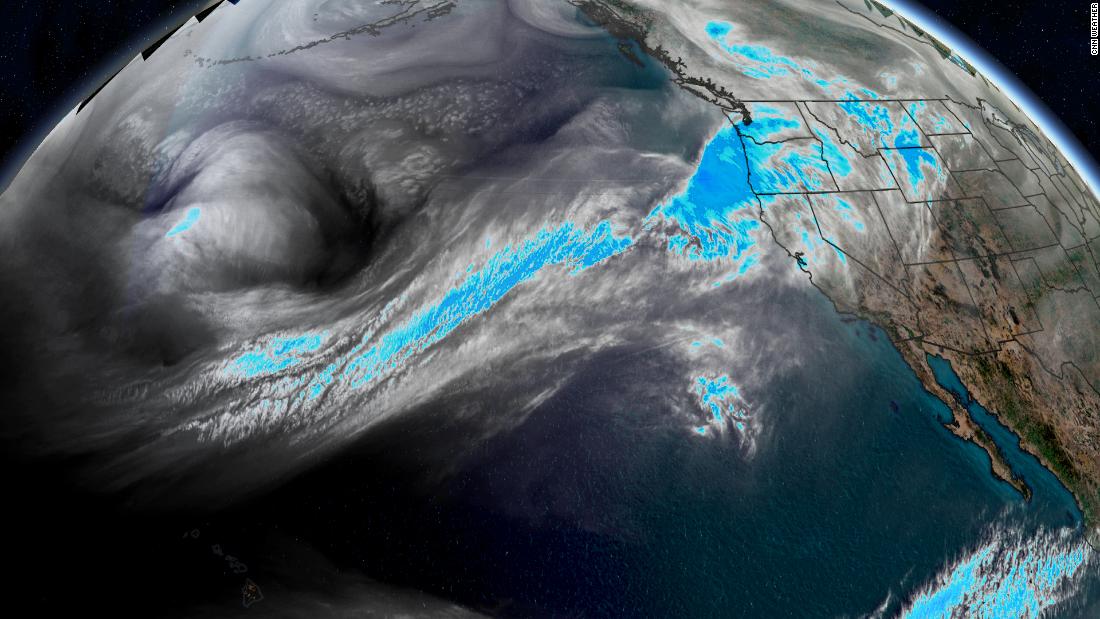
So far, Seattle has seen nearly 6.5 inches of rain this year. With an additional 2-4 inch forecast, the city could receive about 25% of the annual rainfall from the atmospheric river that drenches the region by January 15.
“This swampy start could propel Seattle to its wettest start in any year on record. The previous wettest period of January 1-15 was in January 1956, when nearly 7 inches fell in the first half of the month,” said CNN meteorologist Pedram Javaheri.
Atmospheric rivers are long, narrow areas of the atmosphere – like rivers in the air – that carry water vapor, according to the National Oceanic and Atmospheric Administration.
Check the weather forecast across the countryand
There is also a lot of warmth in the middle of the atmosphere during this special atmospheric river event. This will increase snow levels at elevations above 6,000 feet over much of the Cascades, with rain falling below that level.
“This will exacerbate flood concerns as heavy rains fall on top of abundant snow. The threat of rapid melting, increasing runoff and downstream river flooding is something everyone in western Oregon and Washington should be aware of,” Javaheri says.
Higher elevations in Washington can see 2 to 4 inches of rain in the next 24 hours, increasing the risk of flooding and landslides.
Precipitation at lower elevations should be between 1 and 2 inches during that time.
In Portland, Oregon, the National Weather Service Office has forecast up to 7 inches of rain in the higher elevations through Wednesday morning and up to 5 inches for the lowlands. In addition, there is a warning for strong winds.
Wind warnings stretch all along the Oregon coastline, where gusts of wind can reach up to 120 mph. This raises concerns about fallen trees, power outages, and potential hazards along Interstate 5.
The fallout from the record-breaking wildfires also increases the threat of flooding for Oregon. More than 1 million acres have been burned, according to the Oregon Department of Forestry. These burn scars that remain make the flood threat even greater, due to the charred soil with no vegetation to soak up the rainwater. This increases the risk of flash floods and landslides due to the loose terrain.
The guilty
The weather phenomenon that causes all this rain is called an atmospheric river. They are, in fact, moist rivers high in the atmosphere. They carry abundant moisture from tropical regions and release it in the form of rain or snow in other areas.
According to NOAA, “These columns of vapor move with the weather and carry an amount of water vapor approximately equal to the average flow of water at the mouth of the Mississippi.”
Not all atmospheric rivers are bad. They often carry very useful rain to areas that need it. Many areas along the west coast receive 30% -50% of their annual rainfall in just a few such events.
This particular atmospheric river spans 2,700 miles with a bull’s eye in the northwest. That matches the distance from Seattle to Miami as the crow flies, and the moisture it carries could put January 2021 in the record books.
Hurricane hunters are heading for the west coast
This atmospheric river event is so important that hurricane hunters fly through it and drop buoys.
“To really understand how important an atmospheric river event is going to be, you have to get close to it. Hurricane hunters fly in and collect valuable data that forecasters then use to determine how a particular atmospheric river will affect the Pacific coast,” says CNN meteorologist Allison Chinchar.
This is their second flight of the season and something they do regularly.
The Hurricane Hunters first began flying in atmospheric rivers in February 2016 and have since shipped 6-12 flights each year from January through March. In itself, it is not that unusual for them to fly this event, although it is a popular misconception that when the winds die of hurricane season, so do their roles, ”says Javaheri.